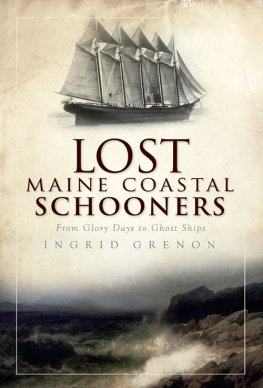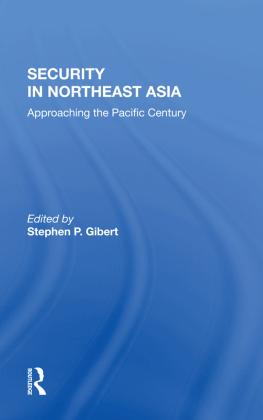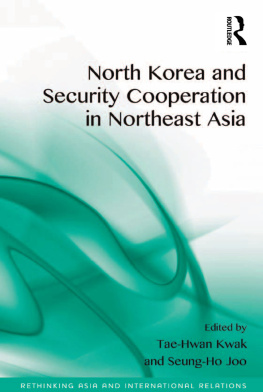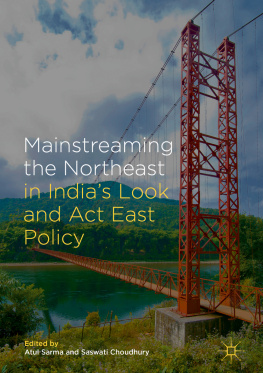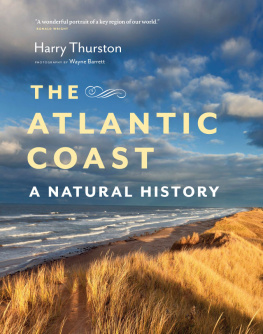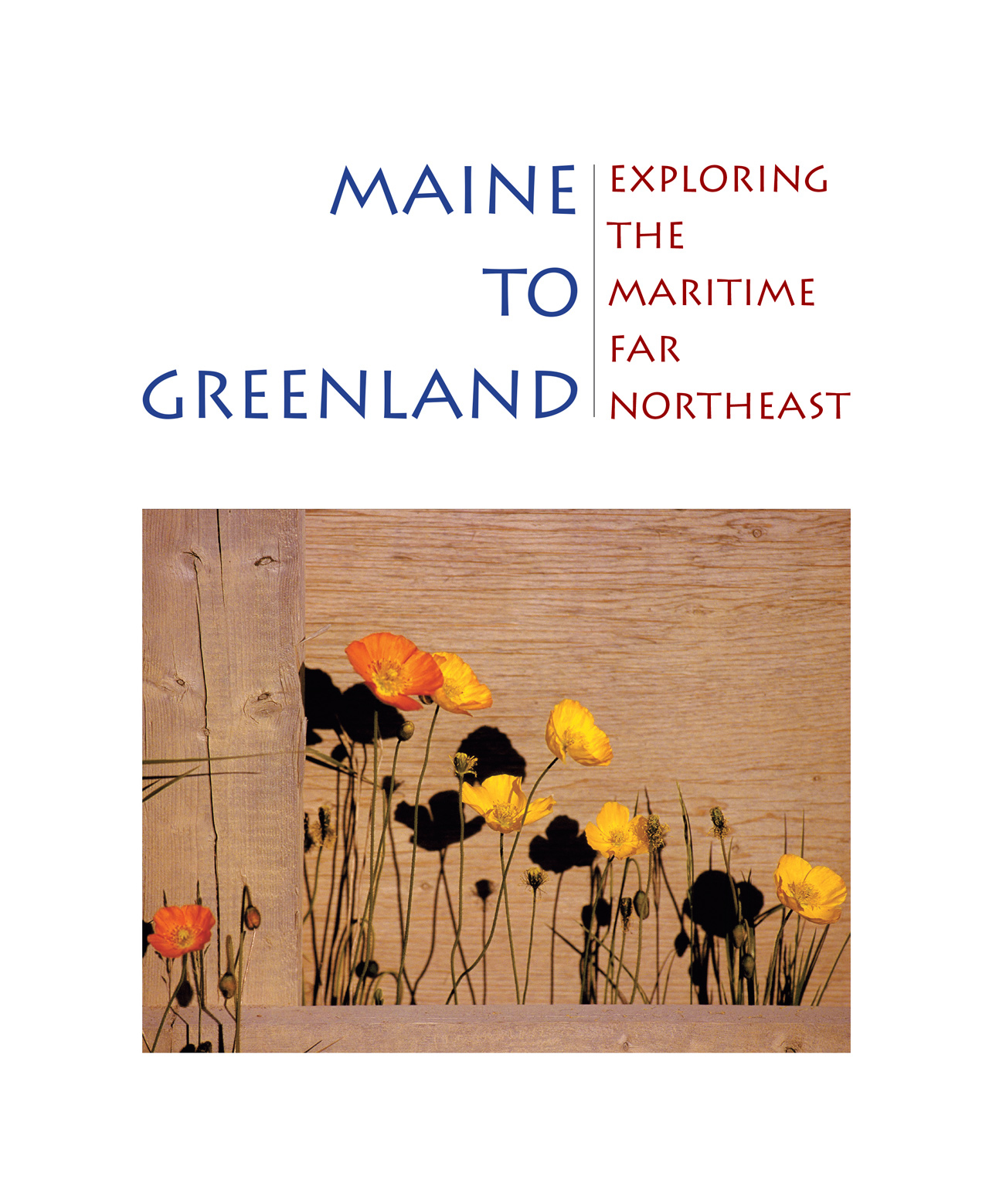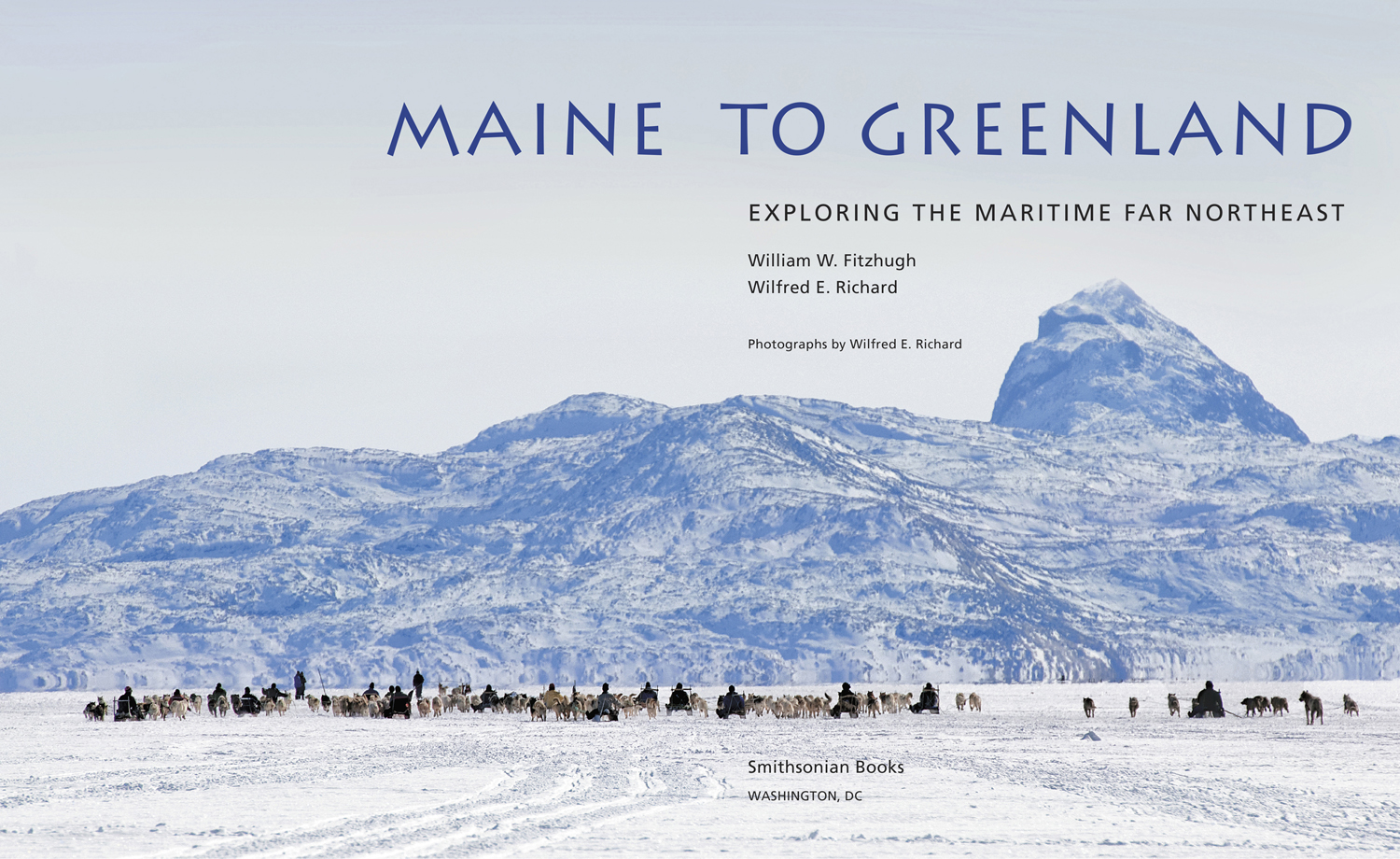Hardcover Edited by Letitia OConnor
Hardcover Designed by Dana Levy
Published by Smithsonian Books
Director: Carolyn Gleason
Production Editor: Christina Wiginton
All rights reserved. No part of this publication may be reproduced or transmitted in any form or by any means, electronic or mechanical, including photocopying, recording, or information storage or retrieval system, without permission in writing from the publishers.
This book may be purchased for educational, business, or sales promotional use. For information, please write: Special Markets Department, Smithsonian Books, P. O. Box 37012, MRC 513, Washington, DC 20013
Library of Congress Cataloging-in-Publication Data
Fitzhugh, William W., 1943- author; Richard, Wilfred E., 1940-author
Maine to Greenland : exploring the maritime far northeast / William W. Fitzhugh and Wilfred E. Richard; photographs by Wilfred E. Richard.
pages cm
Includes bibliographical references and index.
eBook ISBN: 978-1-58834-379-6
Trade Hardcover ISBN: 978-1-58834-377-2
For permission to reproduce illustrations appearing in this book, please correspond directly with the owners of the works, identified at right. Smithsonian Books does not retain reproduction rights for these images individually, or maintain a file of addresses for sources.
Text 2014 by Smithsonian Institution and Wilfred E. Richard
Images 2014 by Wilfred E. Richard except as listed below.
All photographic images in this book were taken by, and rights are held by, Wilfred E. Richard, except as indicated below. The large format maps were created by Richard D. Kelly, Jr., and Marcia Bakry (Smithsonian Department of Anthropology) except for which is solely Bakry.
William W. Fitzhugh:
Stephen Loring: .
Peary Archives, Peary-MacMillan Museum, Bowdoin College: .
Arctic Council and the International Science Committee (IASC) - Arctic Climate Impact Assessment Report, 2004:
National Snow and Sea Ice Data Center, 2004:
Fisheries and Oceans Canada:
Walter Adey and L-A. Hayek:
Nick Caloyianis:
Karen Loveland:
Eric Phaneuf:
Maine State Museum:
Stearns A. Morse:
Parks Canada: [this is from his book, cited in bibiog]
National Museum of Natural History, Smithsonian Institution, Don Hurlbut:
Institute of Cultural and Social Anthropology, Georg-August University:
Angsar Walk:
John White illustration, The British Museum:
Charles Francis Hall, engraving from his 1865 book: .
Paul Nicklen, National Geographic Society:
Inger Knudsen Holm Collection: : Bowdoin College Museum of Art, Brunswick, Maine Museum Purchase with Funds Donated Anonymously & Plattsburgh State Art Museum, Rockwell Kent Gallery and Collection. Digital photography by Peter Siegel.
Abraham Anghik Ruben sculpture, photo by Kipling Gallery, Toronto:
National Research Council:
Two systems of measurement are used in the region designated as the Maritime Far Northeast. In Canada and Greenland the metric system is used, while in the United States the English system is used. In this work, most measurements are presented in both metric and English systems. Conversion values are as follows:
D ISTANCE: Mile to kilometer multiply by 1.61; Kilometer to mile multiply by 0.62. One statute or land mile equals 1.15 nautical or geographical miles; nautical/geographic miles are converted to statute miles.
L ENGTH: Foot to meter, multiply by .30; meter to foot, multiply by 3.28
A REA: Square kilometer to square mile, divide by 2.59; square mile to square kilometer, multiply by 2.59.
1 Mile2 = 2.59 km2; 1 km2 = 0.3861mi2
T EMPERATURE: Centigrade to Fahrenheit multiply degree centigrade by
W EIGHT: Kilograms to pounds, multiply by 2.21
The Moravians brought poppies (Papaver family) from Epurope to their mission stations along the Labrador coast in late 1700s and early 1800s to brighten their lives and remind them of home. Here they thrive around the Moravian churchyard in Nain.)
: Uummannaq annual dog sled race
v3.1
C ONTENTS
Down how many roads among the stars must man propel himself in search of the final secret? we have joined the caravan, you might say, at a certain point; we will travel as far as we can, but we cannot in one lifetime see all that we would like to see or learn all that we hunger to Know I can only say that here is a bit of my personal universe, the universe traversed in a long and uncompleted journey .
Loren Eiseley, The Immense Journey
To my father, Emery G. Richard, and mother, Marie Sorrell Richard, uncle, Wilfred C. Richard, aunt, Ethel Sorrell Reals and the mentors of my teenage years, Georges Bourque, Normand Paquette, Gene Tucker
To my wife, Lynne Fitzhugh; to my mentors, Elmer Harp, Jr., Tony Morse, and Tony Williamson; to my many students and colleagues; and to my friends throughout the Maritime Far Northeast, all of whom made my research possible, exciting, and productive
P REFACE
T HE COLLECTION OF JOURNEYS presented in this book in images and words celebrates a region that the authors have explored throughout their entire lives. Bill Fitzhugh, a Smithsonian anthropologist, found a fascination with the North at Dartmouth College, where he met the famous Arctic explorer and author Vilhjalmur Stefansson, and trained with Elmer Harp, who took him on his first archaeological dig at a Dorset site in Newfoundland. As a Harvard graduate student, he again joined an expedition led by Harp to the east coast of Hudson Bay. He has conducted four decades of archaeological research from Newfoundland to Baffin Island, starting in Labrador in the early 1970s. The mystery of the first European settlement in the New World, which was identified at LAnse aux Meadows on the Newfoundland coast in 1960, resonated with his Danish Viking ancestry, which resulted in Vikings: The North Atlantic Saga (Fitzhugh and Ward 2000).
Geographer and photographer Will Richard grew up in New Hampshire and settled in Maine, New England states that served as his springboard to the North. In the mid-1990s he became a Registered Maine Guide and established an outfitting company featuring backcountry northern expeditions. As Will began tracing his French Canadian roots back to Quebec and Acadia, his journeys expanded northward and took on a life of their own. After a trip to Labrador and subsequently meeting Bill, he joined the Smithsonians Gateways Project, and the Maritime Far Northeast (MFNE)its lands, flora, and animalsbecame a consuming focus of his photography and studies, leading him northward to Ellesmere in northern Nunavut and eventually to Greenland.
Each author developed a fascination for northern life and its straightforward physical challenges: the seasons of long light and deep darkness and the cold of altitude and latitude. The North became a touchstone that has given their lives meaning by awakening their senses to explore its landscapes, terrestrial and marine, and to understand its cultural heritage, seeking awareness and knowledge. The authors also share the conviction that the peoples and cultures of this region offer lessons that need to be considered by others as the challenges of climate and environmental change, not only in the North but also in the wider world, shift the parameters of understanding.


